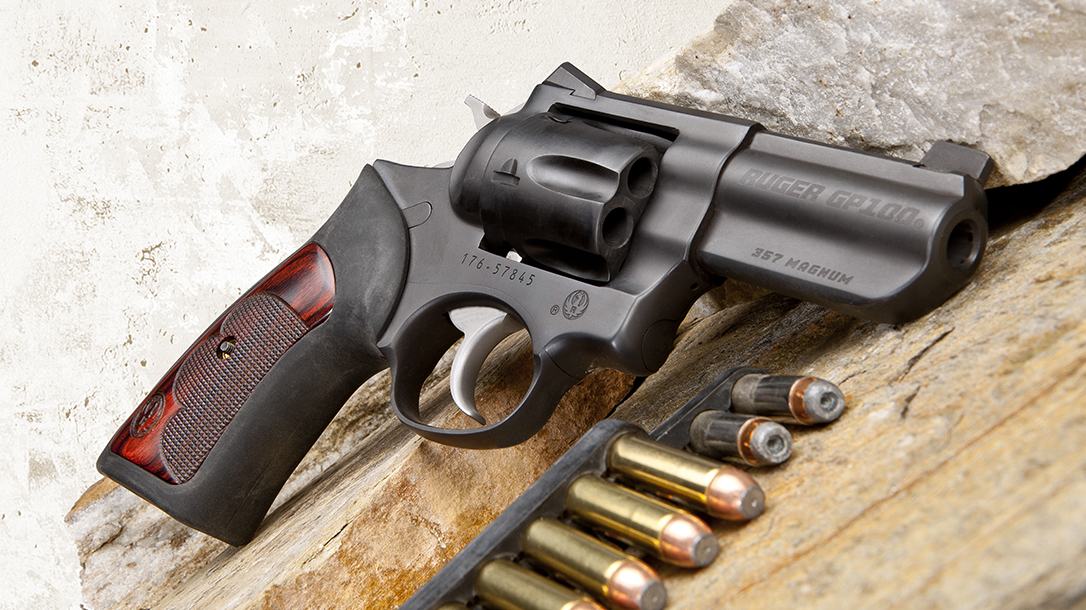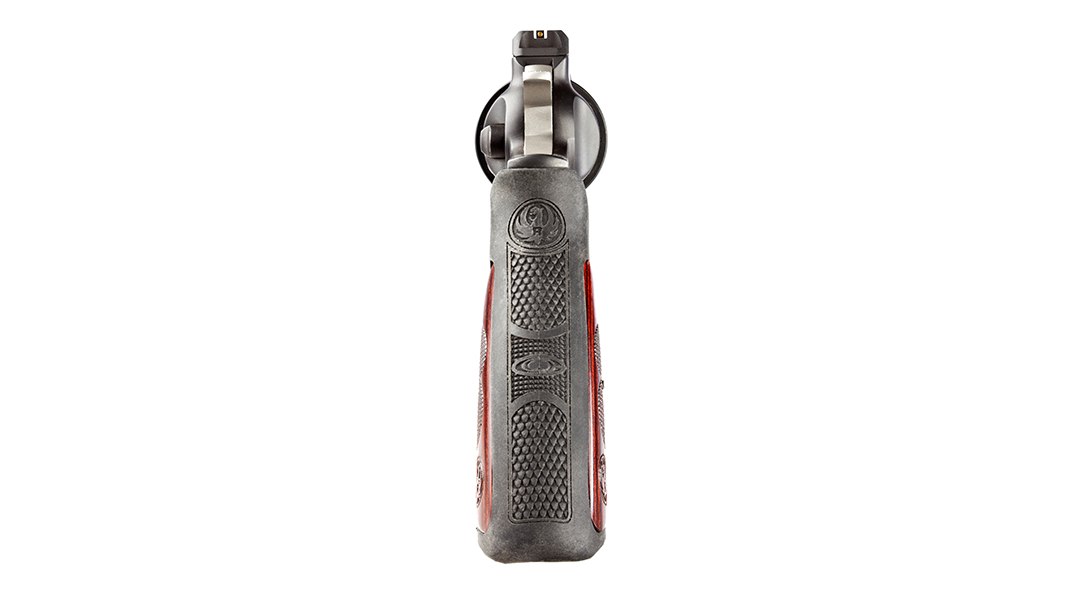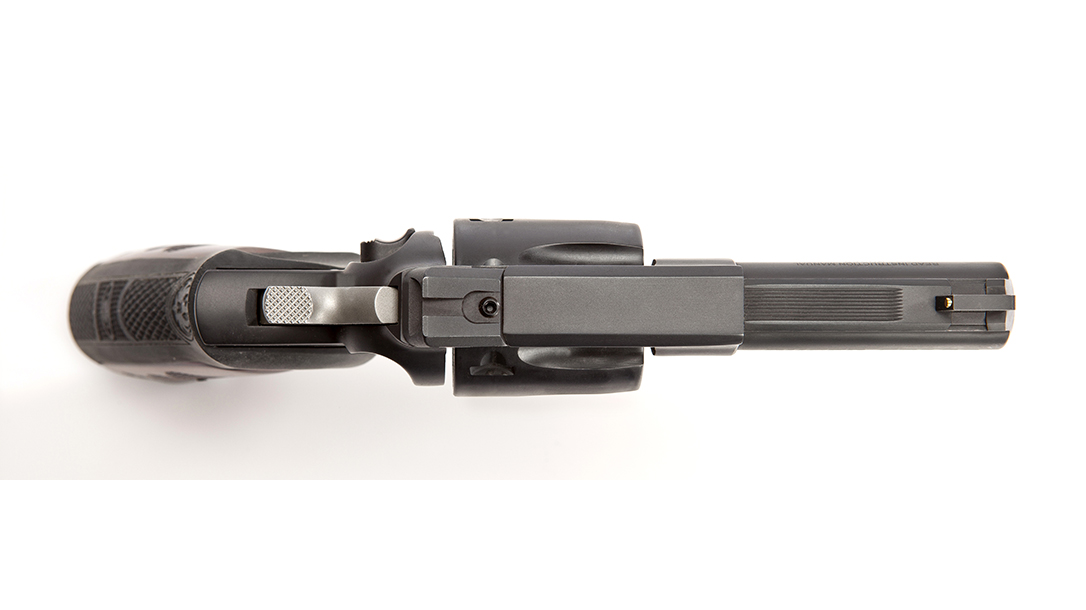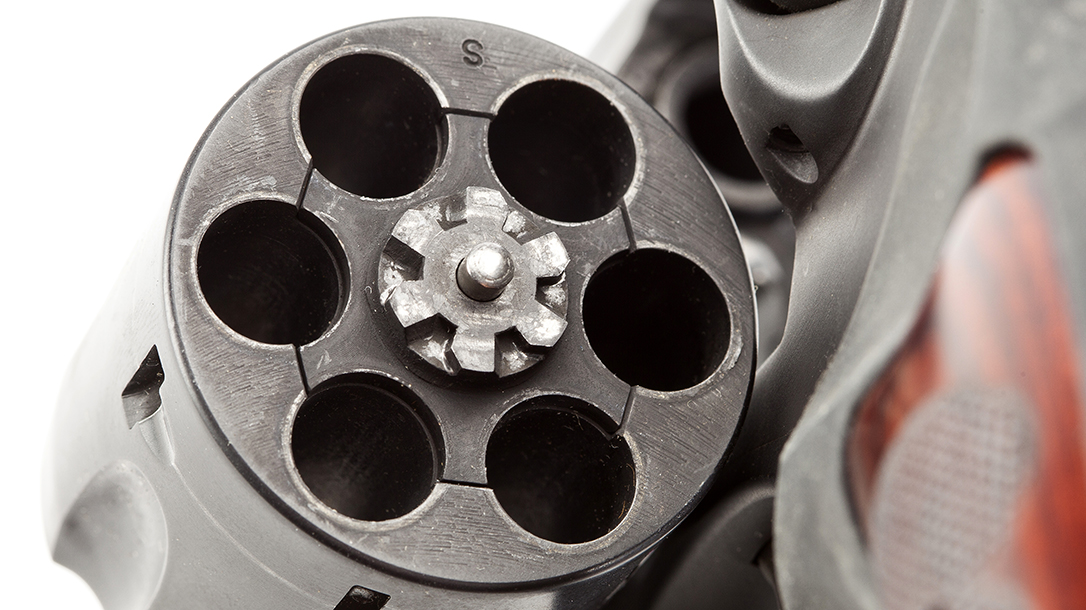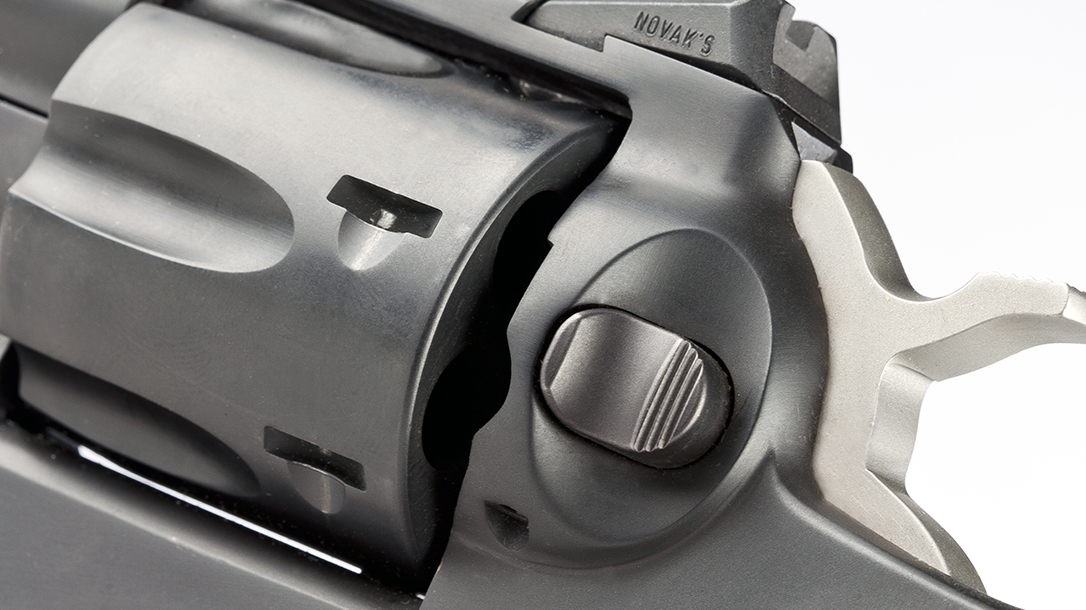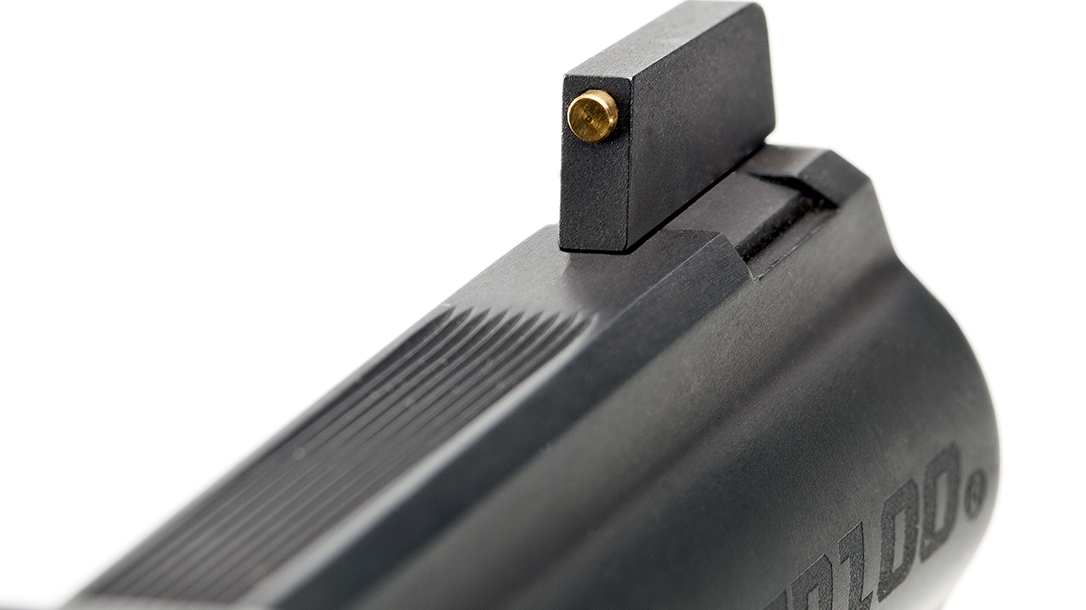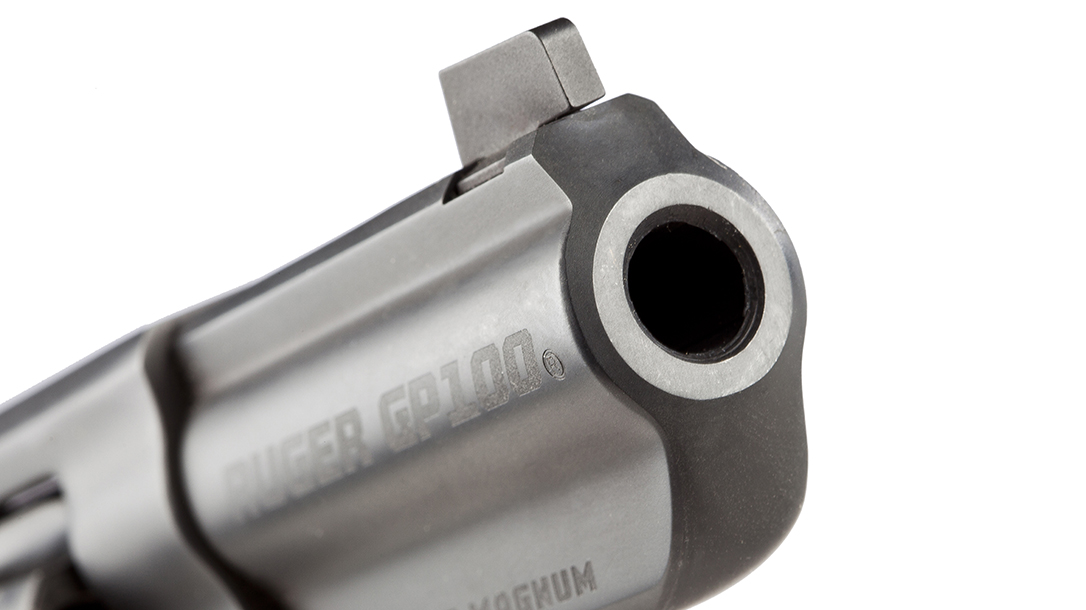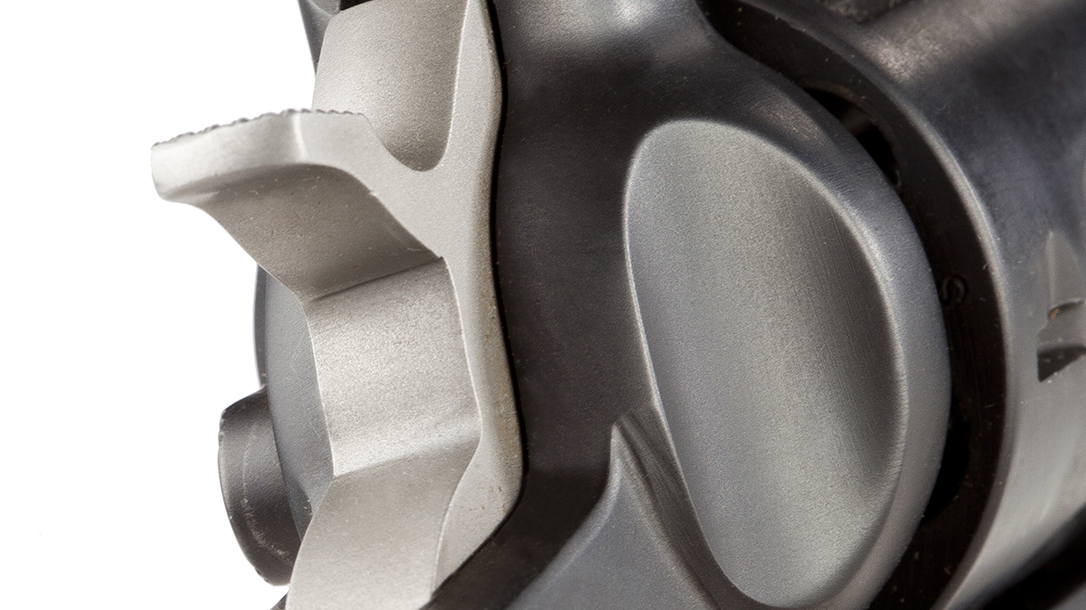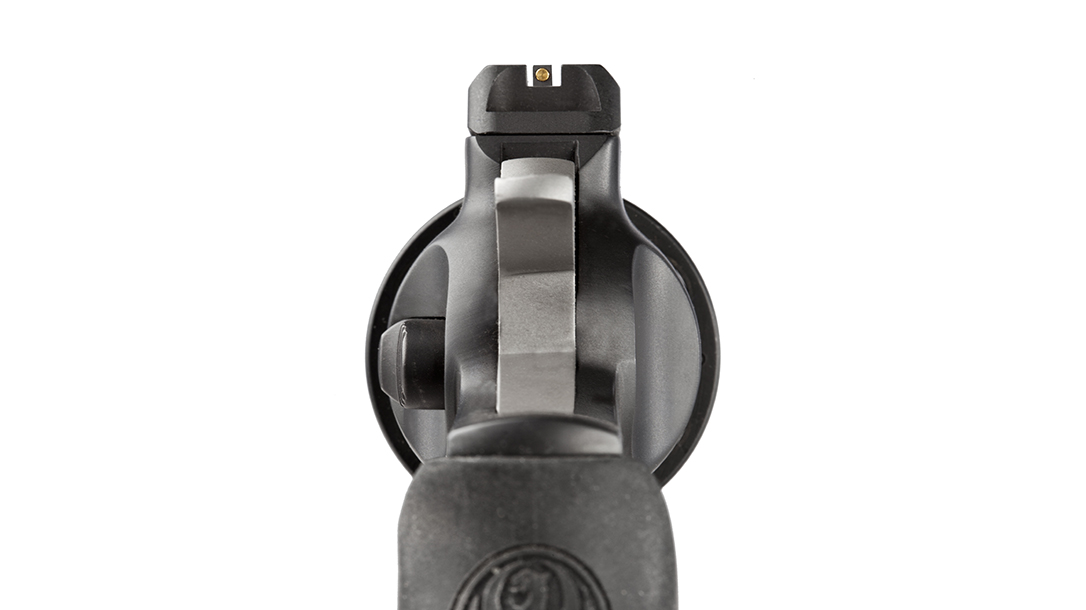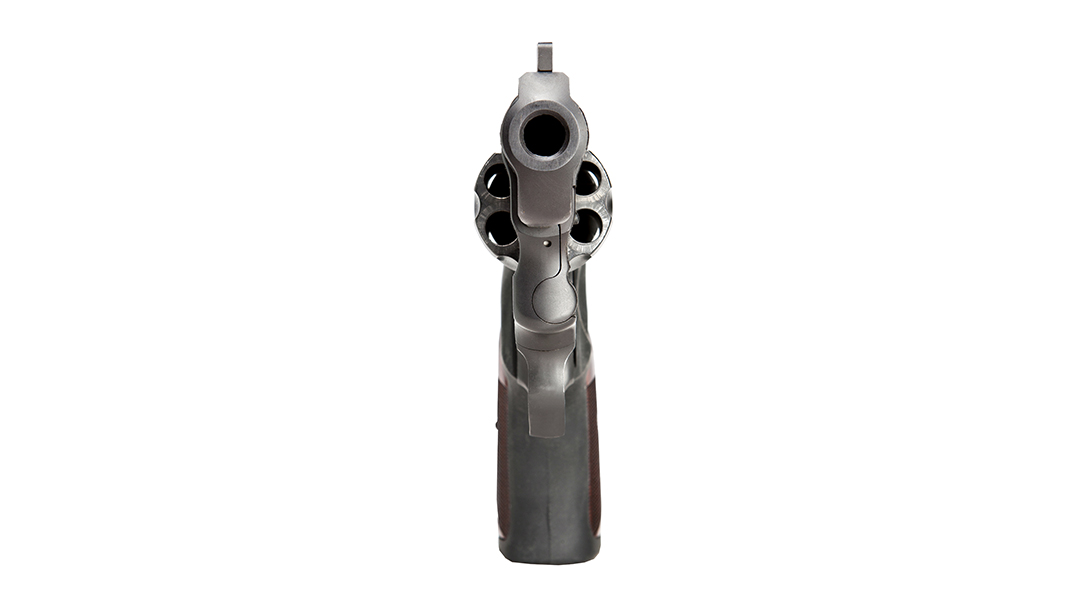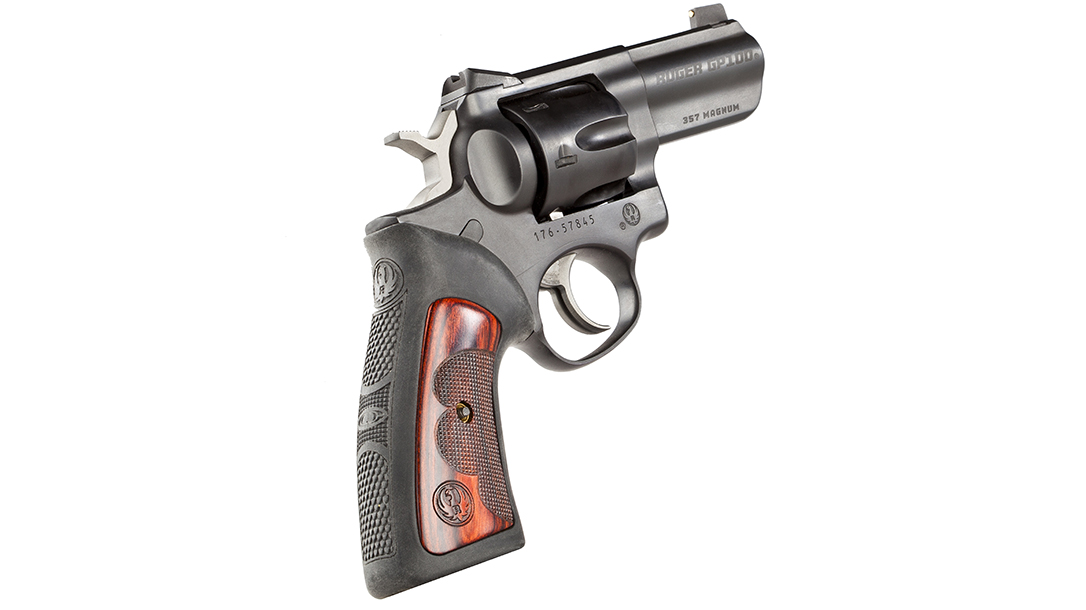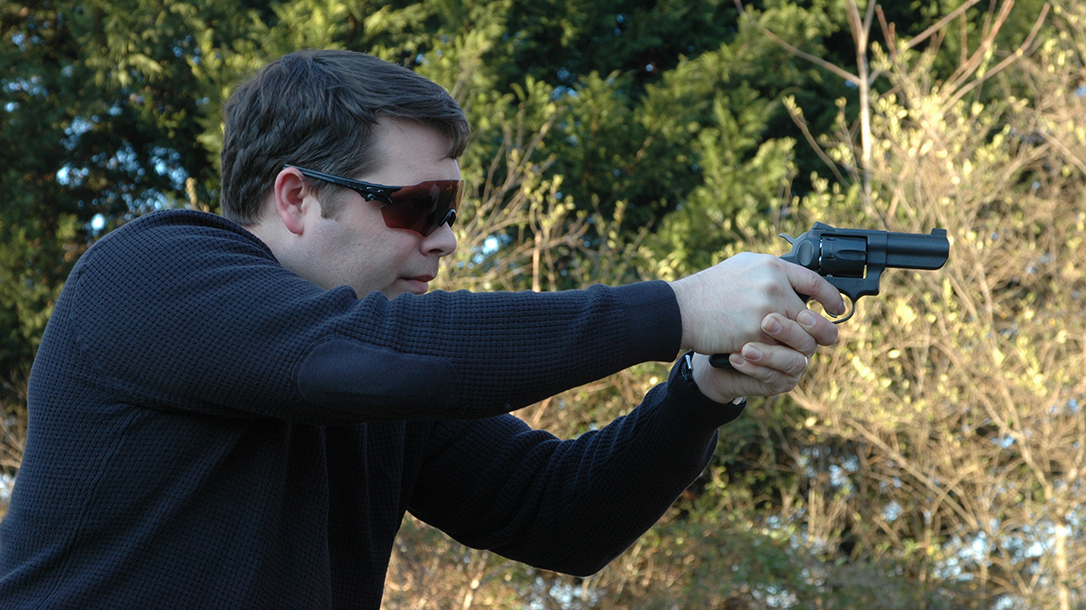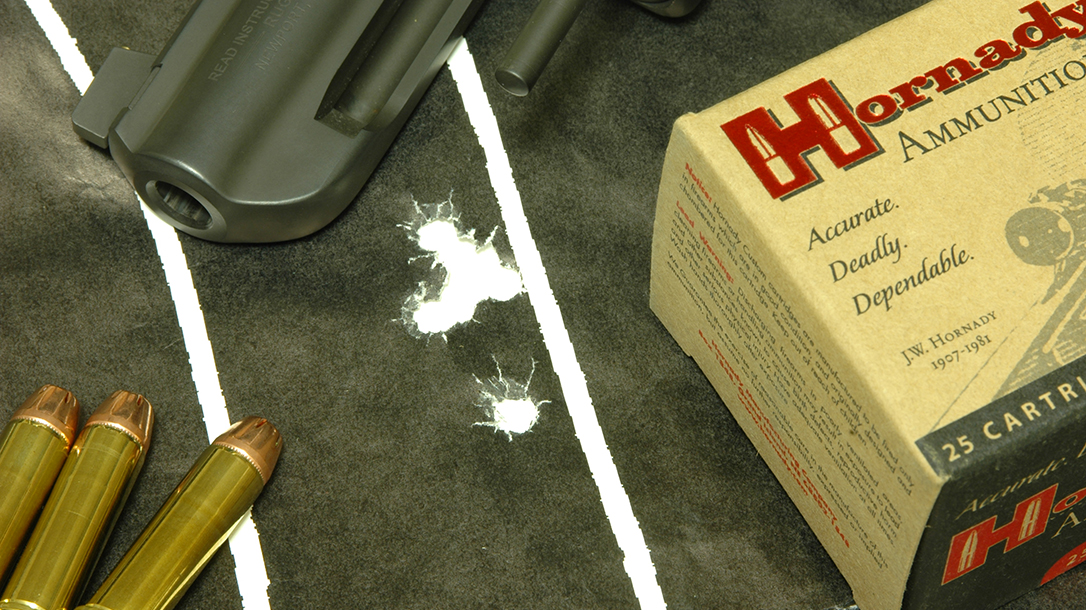Engineers make things work. But making them work best for a given application generally falls to those who have end-user experience. From this perspective, we can all be grateful for the partnership between longtime gun writer Wiley Clapp and distributor TALO. Starting with the successful 21st Century Commander, a lightweight .45, Clapp has designed a series of Colt 1911s as well as a 3-inch-barreled Ruger revolver in .357 Magnum. Available with either a stainless or matte blued finish, the Wiley Clapp .357 is based on Ruger’s heavy-duty GP100 frame and features robust Novak fixed sights, user-friendly contouring and wooden grip inserts with Clapp’s trademark “fingerprint” checkering.
Before we get into what makes it his own, a few words are in order about Ruger and the GP100. Many shooters who only know Ruger’s current product line may not realize how influential the company is. Both its first gun, the Mark III .22 LR pistol (introduced somewhat uncannily as the “Standard Model”) and the later 10/22 rifle are industry standards, as evidenced by the fact that other companies manufacture clones of both guns. Ruger’s Single-Six, the first of its single-action revolvers, was introduced in 1953 when TV Westerns and movies had made cowboy-style firearms popular again.
Advertisement — Continue Reading Below
That model and Ruger’s subsequent sixguns are almost unquestionably responsible for the revived market that led the mighty Colt to bring back the iconic Peacemaker it had discontinued in the late 1940s. The Single-Six also incorporated innovations such as then-groundbreaking investment casting as well as using the more reliable coil springs instead of the leaf-type springs traditionally used in revolvers.
The GP100 came along in 1985, intended as a heavy-duty service or defensive pistol. Closer to Smith & Wesson’s stout L-Frame than the smaller, lighter K-Frame, the robust GP100 features a frame design that does away with the side plates found on most other revolvers in order to add strength and uses a subassembly design that makes the gun easy to service. With its heavy underlug and steel construction, it’s by no means a light gun. But it’s exceptionally tough, which made it a natural fit for Wiley Clapp. Clapp was looking to create a gun that was reliable, rugged and as powerful as possible. But it still had to be manageable for everyone in the family.
Wiley’s Upgrades
Functionally, the Ruger GP100 remains as it has always been, and the upgrades Wiley suggested consist primarily of things that make the gun more user-friendly. The most visible difference (and probably the greatest improvement) is in the sights. Most revolvers provide you with the choice of either a machined groove to serve as a fixed rear sight or an adjustable rear unit that may or may not survive hard use and will almost certainly have sharp edges. The meaty topstrap of the Clapp GP100, though, has been machined to accept a Novak LoMount fixed rear sight. Arguably the most influential rear sight ever used on a handgun, the wedge-shaped LoMount provides a crisp, easily visible sight picture while remaining tough and snag-free.
Advertisement — Continue Reading Below
The wide-notch variant found on the GP100 allows a little more light on either side of the Novak front sight. The sight is a dovetail-mounted front post with a brass bead. I adopted the same combination of a wide-notch Novak LoMount rear with a front gold or brass bead sight on my working guns over eight years ago. I’ve found it to be fast and accurate both on the range and in classes at Gunsite and Thunder Ranch. The same sights also appear on Wiley’s Colt pistols.
More Details
The muzzle, frame and cylinder of the GP100 have been smoothed to remove sharp edges. The the most obvious change is the bevel towards the front of the cylinder. This helps free it up faster from a holster. Although intended more as a field or truck gun than a CCW piece, the 3-inch barrel allows the GP100 to fill both roles. When the first snub-nosed .357s began to hit the market, detractors argued that the shorter barrel would cause such a velocity loss that the end result would be comparable to a .38 Special. But that’s not the case. When I chronographed the same loads from 2-, 3-, and 4-inch-barreled .357s from the same manufacturer, the average velocity loss between the 2- and 4-inch-barreled guns was only about 100 fps, which is negligible for a caliber that can easily break 1,400 fps.
The problem with the 2-inch-barreled guns is the massive blast and recoil, which makes them painful and difficult to shoot. But the 3-inch-barreled Ruger GP100, especially with its underlug, adds recoil-dampening weight up front where you need it without making the gun muzzle heavy or slow to transition from one target to another.
Advertisement — Continue Reading Below
Weight-wise, the Clapp GP100 weighs 36 ounces unloaded, about 3.5 ounces less than my 4-inch-barreled S&W Model 681, which is a fully lugged L-Frame .357, and 4 ounces more than my 3-inch-barreled S&W Model 65, a svelte K-Frame .357 that came it at 32 ounces on the nose. For comparison, a full-sized 1911 typically comes in at around 40 ounces.
Cylinder Latch, Trigger & Grip Frame
Unlike S&W cylinder latches, which push forward, or Colts, which pull to the rear, the Ruger latch pushes inward for a fast, hard-to-miss release. The double-action trigger pull was smooth and consistent throughout the stroke. The crisp single-action pull averaged 3.17 pounds, according to my Lyman digital trigger pull gauge.
The grip frame follows the traditional GP100 layout. Said to have been inspired by the dashboard of Bill Ruger’s BMW, the GP100 uses a stem that protrudes down from the receiver and slips into the Santoprene grip instead of the traditional pair of scales bolted onto either side of a full-profile grip frame. The stem is held in place in the rubber grips by a solid cylindrical locking piece, which is in turn secured by the wooden insert panels on either side. While rubber grips have a bad tendency to make a gun “print,” the wood inserts reduce this while still maintaining the rubber’s recoil reduction properties. It’s not a bad combination, and the GP100 is quite comfortable to shoot.
Advertisement — Continue Reading Below
Range Performance
I broke the revolver in with roughly 390 rounds of Black Hills’ 148-grain .38 Special hollow-base wadcutter ammo as well as a couple hundred rounds of a .38 Special handload assembled with Bullseye powder and 150-grain, lead, semi-wadcutter bullets on a Dillon 550 press. Add in a mixed bag of 180 various .357 Magnum hollow points with bullet weights ranging from 50 to 158 grains, and I fired just a bit under 800 rounds through the GP100. Needless to say, there were no malfunctions.
Fired from a Ransom Rest, the GP100’s average group size was 2.42 inches at 25 yards with all of the test ammo. The best group measured 1.2 inches. One thing I learned from a previous Ransom Rest test is that, while the GP100 shot .38 Special rounds beautifully off-hand, it didn’t do as well off a rest. It averaged 3.24 inches with my .38 Special handload, and shot similarly with factory .38 Special loads.
Advertisement — Continue Reading Below
I also used Liberty Ammunition’s 50-grain, lead-free Civil Defense load, which has an advertised velocity of 2,100 fps. This load averaged 4.27 inches, most likely because the barrel’s twist rate is doubtless far from optimized for light projectiles moving that fast. Removing the Liberty load and the .38 ammo, the GP100 averaged an impressive 1.75 inches at 25 yards with conventional .357 Magnum loads.
Off-hand, hits at 25 yards and well beyond were basically gimmes with the GP100, and even the recoil of full-power .357 Magnum rounds was manageable during rapid fire. Although most shooters first think of autopistols when considering a defensive gun, it’s unwise to underestimate the .357 Magnum. Its reputation as a fight-stopper is well earned, and it’s difficult to duplicate the accuracy in an autoloader at anywhere near the same price range.
Final Thoughts
Wiley Clapp’s first gun, the 21st Century Commander, boasted that it had “everything you need and nothing you don’t.” It was a winning combination then, and the same philosophy of adding practical features without creating any unnecessary distractions works equally well on the Ruger.
Advertisement — Continue Reading Below
Wiley Clapps Ruger GP100 Specs
| Caliber: .357 Magnum/.38 Special |
| Barrel: 3 inches |
| OA Length: 8.5 inches |
| Weight: 36 ounces (empty) |
| Grips: Black rubber |
| Sights: Novak gold bead front, LoMount rear |
| Action: DA/SA |
| Finish: Blued |
| Capacity: 6 |
| MSRP: N/A |
Wiley Clapps Ruger GP100 Performance
| Load | Accuracy |
|---|---|
| Hornady 125 American Gunner XTP (.357 Magnum) | 1.52 |
| Hornady 158 XTP (.357 Magnum) | 1.68 |
| Federal 130 JHP (.357 Magnum) | 1.51 |
| Federal 158 JHP (.357 Magnum) | 2.34 |
| Liberty 50 Civil Defense HP (.357 Magnum) | 4.27 |
| Cast 150 SWC Handload (.38 Special) | 3.24 |
*Bullet weight measured in grains, velocity in fps by chronograph and accuracy in inches for three 6-shot groups at 25 yards.
For more information, visit ruger.com.
Advertisement — Continue Reading Below
